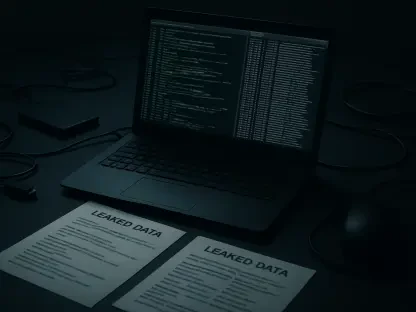In an unsettling development, Wirral University Teaching Hospital NHS Trust in North West England experienced a critical cybersecurity incident that forced its hospitals to revert to pen-and-paper operations. This unsettling event was initially detected as suspicious activity, prompting the isolation of affected systems to prevent the spread of potential damage. Such preventive measures are often linked to ransomware attacks, although the trust has yet to confirm the exact nature of the incident. Consequently, this cyberattack has led to the disabling of some IT systems and the disruption of various hospital services, impacting patient care and scheduled procedures.
The rapid shift to manual processes represents a significant operational challenge for the NHS trust, complicating the delivery of healthcare services. Despite maintaining essential services, the hospitals admitted some scheduled appointments and procedures had to be rescheduled or postponed. However, patients were still advised to attend their scheduled appointments unless informed otherwise. Maternity services continued functioning normally until further updates were provided. This unexpected dependence on pen and paper has highlighted the importance of robust cybersecurity measures in safeguarding critical healthcare infrastructure.
Immediate Impact on Hospital Operations
The cybersecurity incident primarily impacted three key hospitals within the Wirral University Teaching Hospital NHS Trust: Arrowe Park Hospital, Clatterbridge Hospital, and Wirral Women and Children’s Hospital. Additional services at St Catherine’s Health Centre and Victoria Central Health Centre in Wallasey were also affected. Given the abrupt disruption to IT systems, the trust had to prioritize emergency departments to ensure that life-threatening conditions, such as chest pains, strokes, and severe blood loss, were promptly addressed.
This prioritization was crucial to maintain patient safety and ensure that emergent health conditions received immediate attention. On the other hand, patients with minor injuries like bone breaks and sprains were directed to urgent treatment centers (UTCs) as per broader NHS policy. This redirection aimed at managing the patient load more effectively and preventing unnecessary strain on emergency departments. The trust’s quick adaptation to these changes showcased their commitment to patient care, although it required significant coordination and flexibility.
Business Continuity and Recovery Efforts
In response to the cyberattack, the Wirral University Teaching Hospital NHS Trust activated its business continuity processes to navigate the disruptions and expedite the recovery phase. The trust worked collaboratively with national cybersecurity services to restore normal operations swiftly. This multilayered strategy included immediate actions to isolate affected systems, reduce potential damage, and plan the subsequent restoration of disrupted services. Transparency and regular communication with patients and staff were critical to managing expectations and minimizing unnecessary visits to A&E departments.
Patients were given guidance on the possible delays, particularly in unplanned treatments, due to the ongoing cybersecurity incident. These proactive communication efforts were essential in maintaining patient cooperation and ensuring that the healthcare delivery system remained functional during this challenging period. Moreover, the trust’s emphasis on collaboration with cybersecurity services demonstrated its commitment to resolving the issue comprehensively and preventing future disruptions. This recovery effort showcased the resilience of the NHS trust in tackling digital threats and adapting to ensure uninterrupted patient care.
The Broader Implications of the Cyberattack
In a troubling turn of events, Wirral University Teaching Hospital NHS Trust in North West England faced a severe cybersecurity breach, forcing its hospitals to revert to manual pen-and-paper operations. The incident, detected as suspicious activity, led to the quarantine of compromised systems to halt potential damage. This precautionary step is often linked to ransomware attacks, though the trust has not confirmed the incident’s specifics. The cyberattack resulted in the disabling of some IT systems and disrupted various hospital services, affecting patient care and scheduled procedures.
The abrupt shift to manual record-keeping posed a significant operational challenge for the NHS trust, complicating the provision of healthcare services. While essential services were maintained, the hospitals acknowledged some appointments and procedures needed rescheduling or postponement. Patients were advised to keep their appointments unless notified otherwise. Maternity services continued as usual, pending further updates. This surprising reliance on manual processes underscored the critical need for robust cybersecurity measures to protect vital healthcare infrastructure.









